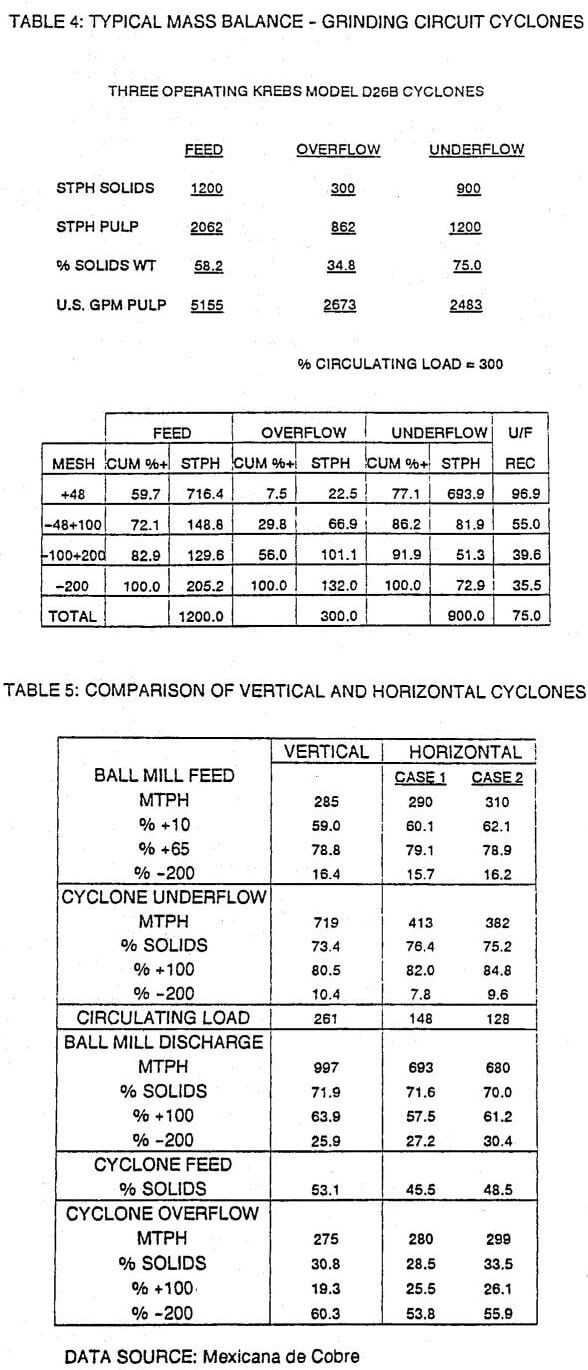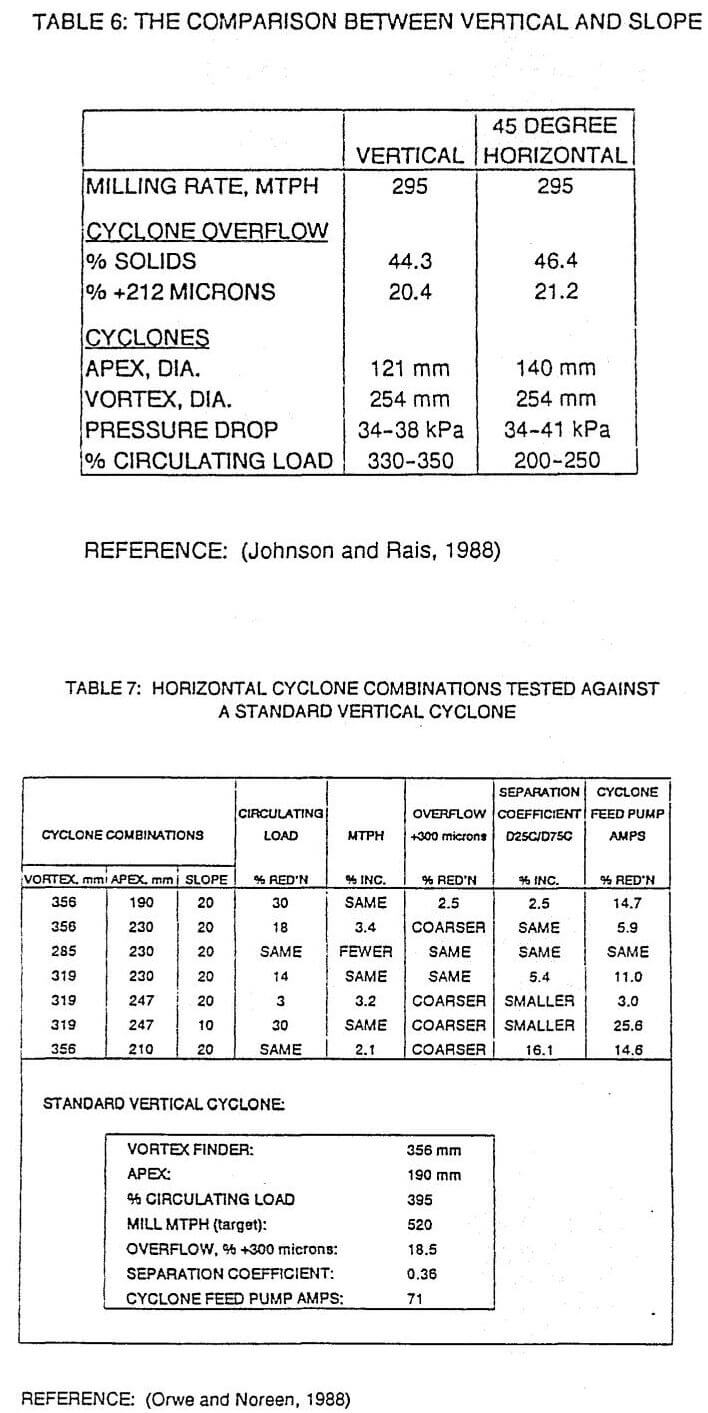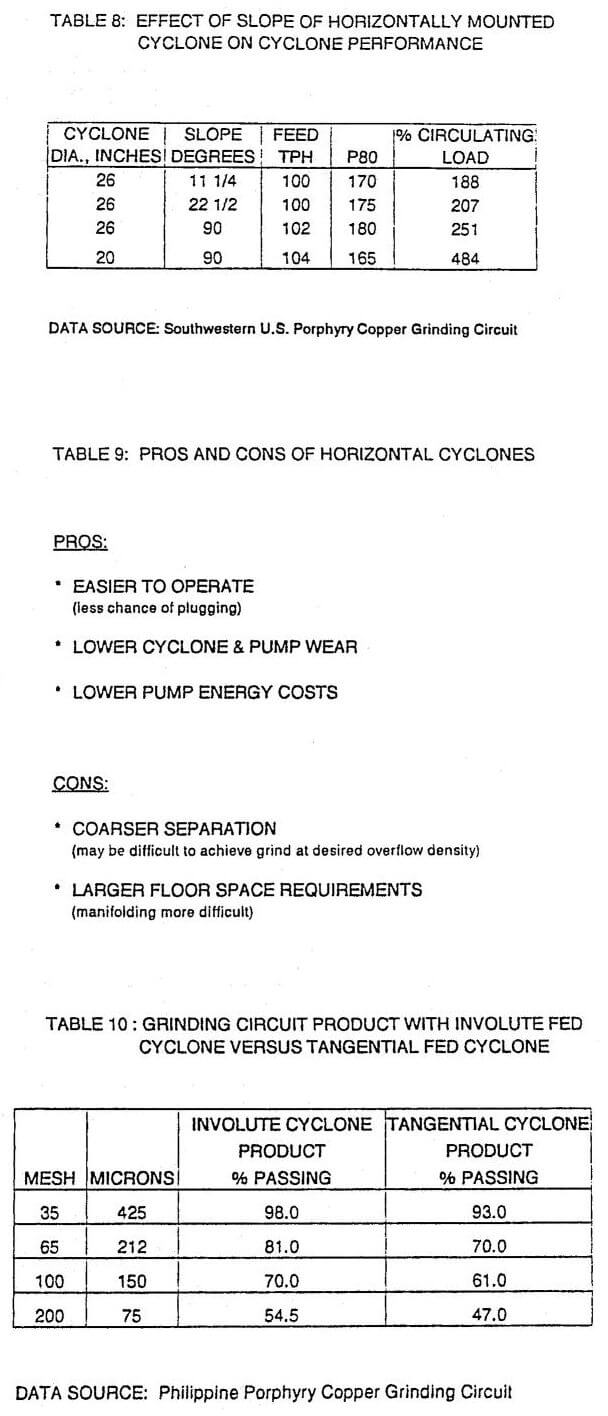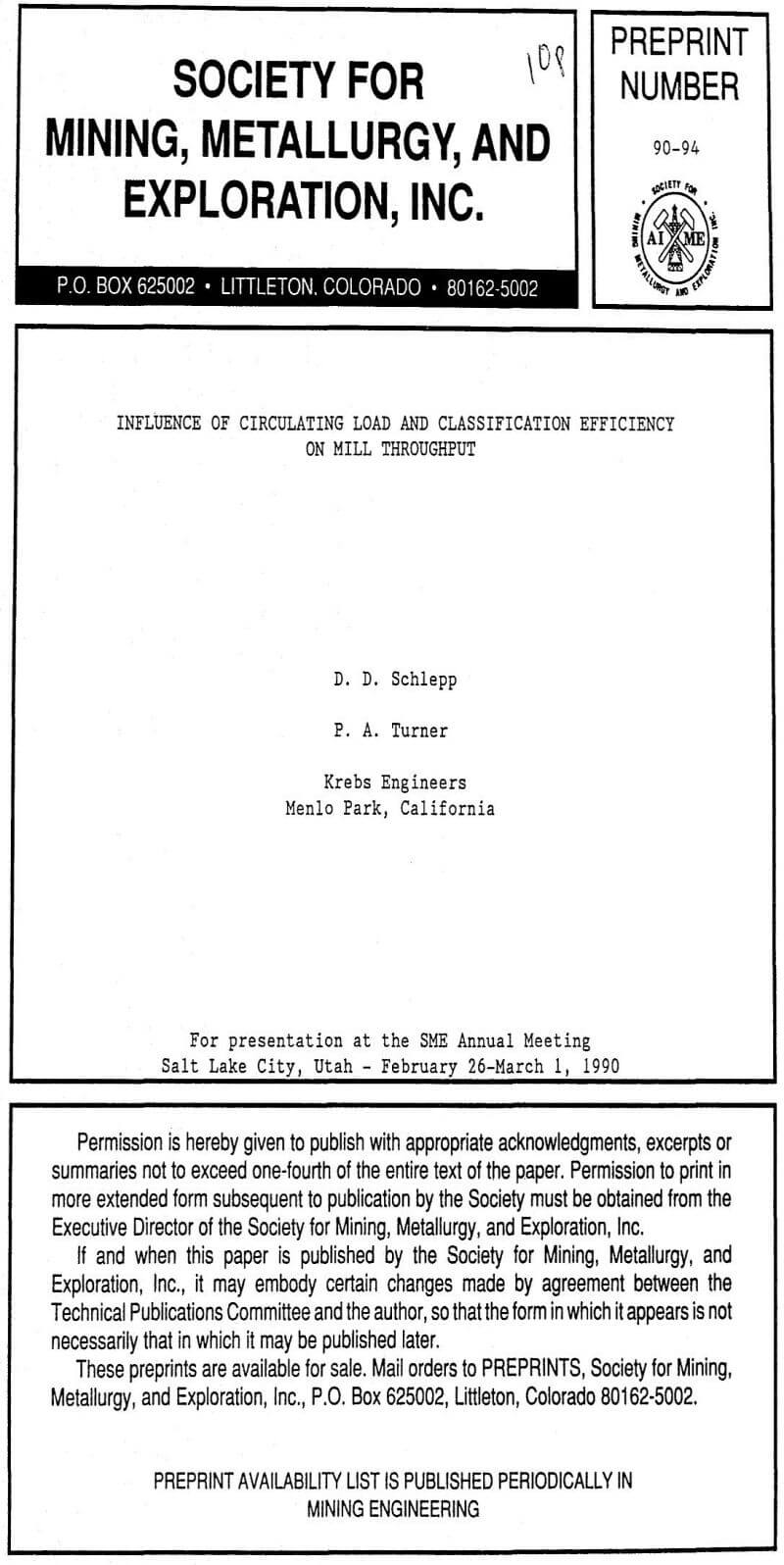Horizontal cyclones can reduce the quantity of fines in the cyclone underflow as described by Hochshied (1984). A number of plants are now operating horizontal cyclones with a substantial reduction of the circulating load and the amount of fines returning to the mill. However, circuit capacity did not increase due to the reduction of fines in the cyclone underflow at any of the plants that converted to horizontal cyclones. The plants that reported increased circuit capacity were producing a coarser grind. In some cases, the reduced circulating loads relieved the constraints of the classification circuit and allowed the circuit to handle more tonnage.
The same increased capacity could be achieved with vertically installed cyclones by adding additional capacity in the pump/cyclone circuit and by accepting a coarser grind.
Examples of plants that have converted to horizontal cyclones are Mexicana de Cobre, Freeport Indonesia, and Bougainville Copper. The results of published data from these plants are summarized in Tables 5, 6, and 7, confirming that decreasing circulating load by removing fines from the cyclone underflow does not increase capacity. Extensive horizontal cyclone tests conducted at a Southwestern copper facility also confirmed the above conclusion. These test results are shown in Table 8.
Although the removal of fines from the cyclone underflow does not result in increased circuit capacity, there are some advantages to minimizing these fines by installing horizontal cyclones. They include lower pump horsepower consumption and reduced cyclone and pump wear. In addition, Freeport Indonesia (Johnson, 1988) reported reduced steel consumption.
Even though horizontal cyclones offer advantages, they should only be considered for coarse grinding circuits. Table 9 summarizes the pros and cons of horizontal cyclones.




